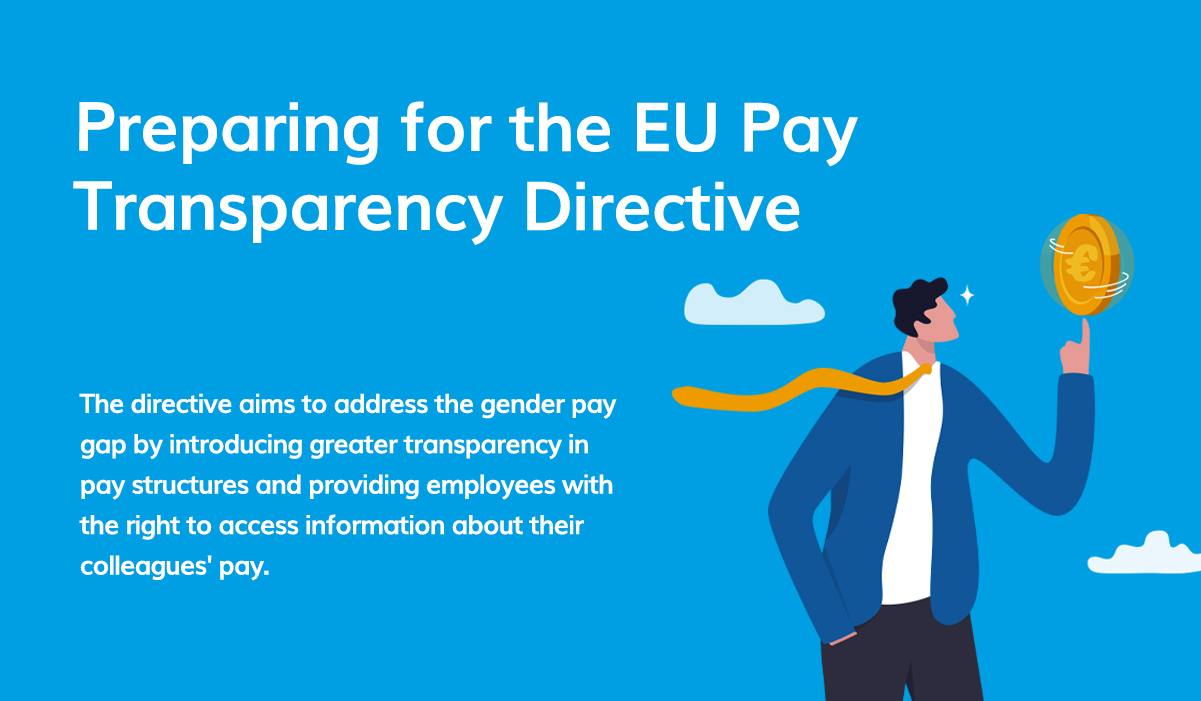The EU Pay Transparency Directive, which is set to come into force in 2024, will require companies to take measures to ensure that employees receive equal pay for equal work. The directive aims to address the gender pay gap by introducing greater transparency in pay structures and providing employees with the right to access information about their colleagues’ pay. This means that employers will be required by law to be more transparent when it comes to pay structures and remuneration information, even prior to one applying for a role.

Being prepared and ahead of the changes will help you avoid last-minute rash decisions. You can take your time to assess what is required and stay ahead.
Conduct a pay gap analysis
The first step companies can take is to conduct a pay gap analysis to identify any gender-based pay disparities that may exist within their organization. This analysis can help companies understand where such discrepancies exist and take steps to address them. Doing this will not only help to bring to light discrepancies but will also help you prepare when new policies are implemented – as pay gap reporting will be a requirement.
Review and update pay structures
After conducting the pay gap analysis, companies should review and update their pay structures to ensure fairness and transparency. This includes creating clear pay scales and job descriptions that are consistent across all roles. Companies should also ensure that pay decisions are based on objective factors such as skills, qualifications, and experience.
Communicate with employees
In the spirit of transparency, it is essential for companies to communicate with their employees about the changes that will be implemented as a result of the directive. Companies should provide clear information about their pay structures and the factors that determine pay decisions. Companies should explain the steps that they are taking to address the gender pay gap (if it is shown to be present), and provide regular updates on progress.
Provide training to managers
Managers play a crucial role in implementing the changes required by the directive. Therefore, it is important for companies to provide training to managers on pay structures, pay decisions, and the steps that they can take to address the gender pay gap. This training should also focus on how to communicate with employees about pay decisions and how to ensure that pay decisions are fair and transparent.
Establish a grievance procedure
Establishing a grievance procedure would enable employees to raise concerns about pay decisions and seek resolution if they believe that they have been unfairly treated. This procedure should be clear, transparent, and accessible to all employees.
In conclusion…
The EU Pay Transparency Directive is a significant step towards addressing the gender pay gap. Companies that take proactive steps to prepare for its implementation will be more prepared when the time comes and are positively regarded to be proactive, rather than reactive. The steps listed above are all valid measures one can take to remain a step ahead and ensure that they comply with the directive and create fair and transparent pay structures. By taking these steps, companies can promote equality in the workplace and build a culture of trust and transparency.
What measures will you be implementing in the face of the Pay Transparency Directive? Share your story with us here.

